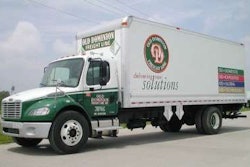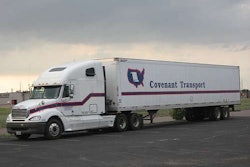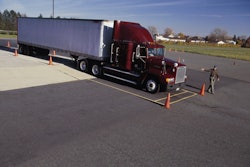Trucks provide America’s agriculture producers with the best service for transporting time-sensitive products from supplier to farm and farm to market, according to a study released this week by the U.S. Department of Agriculture in coordination with the U.S. Department of Transportation. According to USDA, many high-value agricultural products are perishable and time-sensitive, requiring the efficiency, special handling or refrigerated services best provided by trucks.
“The USDA study provides the first holistic examination of agricultural transportation and highlights the essentiality of trucking to our modern agricultural production system,” says Russell Laird, executive director of the American Trucking Associations’ Agricultural & Food Transporters Conference.
The study, commissioned by Congress with the passage of the farm bill in 2008, says agriculture is the largest user of freight transportation in the United States, claiming 31 percent of all ton-miles transported in the United States in 2007. Truck transportation is essential to the movement of these goods, providing the primary transport mode for all agricultural commodities, including grain. Trucks provide a vital flexibility, the study says: “They are the most effective method of moving goods short distances and for assembling quantities of products at elevators and warehouses for transloading to other modes of transportation.”
USDA also found that regulatory actions play an important role in agricultural transportation. For example, Congress has protected critical planting and harvesting activities subject to volatile weather and market conditions by mandating flexibility for movements of agricultural commodities or farm supplies by truck during those times.
Proper funding for our nation’s infrastructure also is important for the safe and efficient movement of agricultural goods. “America’s roads are vital to truck transportation,” USDA says. However, federal data in 2004 reported that “over half of federal-aid highways are in less-than-good condition, and more than one quarter of the nation’s bridges are structurally deficient or functionally obsolete.”
While other transportation modes like ocean shipping and railroad also move agricultural goods throughout the supply chain, they are exempt from antitrust rules, which have the potential to decrease competition, reduce service and raise rates, according to the USDA study. The competitive nature of the trucking sector, however, means that trucking remains an attractive shipping option, even during times of rapidly increasing fuel costs.
“Recent escalating rail rates and declining service for some shippers has pushed more grain transportation onto trucks in recent years,” according to the study, citing figures from the USDA Agricultural Marketing Service. The study also points out that the rapid consolidation of the railroad industry through mergers has resulted in a decrease in the unrestricted interchange of traffic and routing choices; some of these changes decrease the competition and efficiency of the rail industry. “Shippers are concerned with switching limitations, restricted interchange, paper barriers, inconsistent service, high rates, excessive fuel surcharges, bottleneck rates and the effectiveness of the rate challenge process.”
Currently more than 80 percent of cities and communities are served exclusively by trucks, especially the rural areas where rails and waterways do not reach. The first and last movements in the supply chain from farm to grocery store are by truck. To access the Study of Rural Transportation Issues, go to the USDA’s Agricultural Marketing Service website at www.ams.usda.gov/RuralTransportationStudy.














